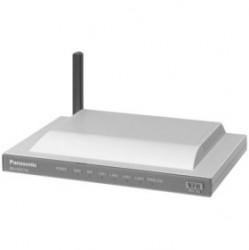As I was returning the Storm after a little test run (I talked about it in the previous post), I decided instead of ditching Verizon altogether to try out their data plan. I got UM175 USB wireless modem and Verizon’s “unlimited” 5GB data plan for $59.99. But testing all that from the middle of New York City isn’t as much fun as taking the set to vacation.
So here I am, in one of Orlando, FL resorts, checking the quality of the service. There’s no problem with connectivity, my question is – just how good the internet connection is for an advanced user like me. All tests were conducted through SpeedTest.net, so that you can enjoy the pretty graphic fonts instead of boring tables.
The most important criteria to look at are latency (how fast the signal travels from point A to point B and back) and upload speed. Big latency is what will kill your IP phone conversation, your online meeting or your live webcast. Download speeds are usually more than adequate, but when you’re trying to upload a bunch of pictures from vacation, a huge Excel spreadsheet or heavy PDF, the podcast or videoblog post – that’s when little upload speed is starting to hurt. Besides, slow upload speeds will also have their say in making your online meeting or IP phone conversation useless.
